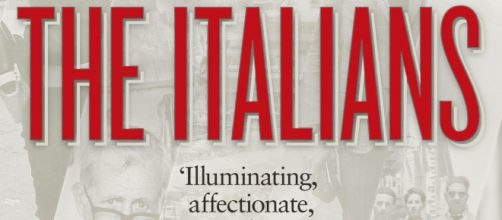London-born John Hooper is the correspondent from Italy for The Economist and Contributing editor of The Guardian. He has recently released a book ,“The Italians”, published by Penguin, where he tries to analyze Italy and (guess...) the Italians. We had the pleasure to meet and interview him at a business lunch organized at the Westin Hotel in Milan by the The British Chamber of Commerce for Italy, a non-profit entity established in 1904 whose mission is to assist and encourage the development of trade and investment between the United Kingdom and Italy.
In your very readable book “The Italians”, the chapter "Life is art" is partially dedicated to Italian food. Which of the Italian regional cuisines do you prefer and why?
Years ago, Prince Vittorio Emanuele, the son of the last King of Italy was put in jail in - of all places - Potenza (the charges against him, by the way, were later dropped). He was visited by a local MP who said afterwards that the Prince told him. "Well," he replied. "His first words to me were: 'You know? It's true what they say: in Italy, you can eat well anywhere”. Now, if we have the word of royalty to the effect that you can eat well even in jail in Basilicata, you can see that deciding which is the best regional cuisine is an almost impossible task -- the level is so uniformly excellent.
Maybe, predictably, the best meals I've had have been in Emilia.
Which are your favorite Italian wines?
I'm going through an Etna phase at the moment. The red has a unique texture. Ultimately, though, I think Italy is a country where the best value for money is to be found among the whites. I'm particularly fond of Friulano. And, for an after-dinner wine, or -- as the Italians would have it -- un ‘vino da meditazione’ (how do you translate that?), I'd plump for Calcaia, a muffato produced near Orvieto.
In the book, you often evidence that even relatively unknown Italian towns host more monuments and art pieces than those offered by entire US states. This wealth of landscape and art is mirrored in the variety of the Italian wines produced: from "Chianti and the wonderful Tuscan hills" to "Primitivo and the manor farms in Puglia", from "Barolo and the royal residences of Piedmont" to “Cannonau and the bare Sardinian inland”. Can Italians do more to promote this versatility and, if yes, how?
I don't think that variety, or versatility as you put it, is the problem.
It is consistency and reliability; using modern techniques to make sure that there is not too much variation between vintages, and sticking to agreed rules and standards. Take the example of Brunello: a superb grape that makes a superb wine, one of the world's true greats. But consumers must know that when they buy a bottle of Brunello di Montalcino they are paying for the real thing.
Has the perception of Italian wines among the British public changed over the last decades?
Certainly. I'm old enough to have begun my wine-drinking in the days when 'Valpol' meant plonk. Now, a lot of people know Valpolicella can be a very classy wine indeed.
As our blog is named “Libiamo”, an unavoidable question: do you like opera?
Yes.
I do. But I cannot pretend to be a devotee. Having said that, one of my most beautiful memories of Italy comes from the days when Corriere della Sera had its Rome bureau near the point where Via Condotti empties into the Via del Corso and I had a desk in its offices. Nearby, there was -- and perhaps still is -- a rehearsal studio for opera singers. On summer days I would often be working at my desk as the notes of an aria came floating through the open windows. As crystal clear and exquisite as a great Gavi (apologies to the Piedmontese -- I forgot that one, didn't I?).

